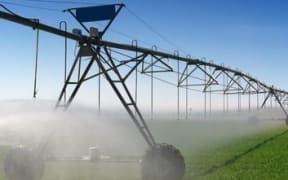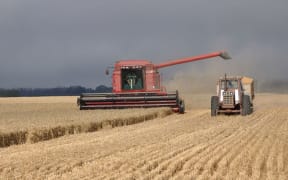Scattered rain over the past day or so has done little to relieve conditions in the officially recognised drought areas in the South Island.
And some other parts of the parts of the country are showing growing signs of stress as well.
Wairarapa and southern Hawke's Bay remain on the drought watch list.
And in the dairy heartland, Waikato, there are reports of wells running dry on some farms.
The Waikato Federated Farmers president, Chris Lewis said it was the cumulative effect of below average rainfall and he had alerted the regional council.
"I've heard reports that some of their wells, which are shallow, have been drying up because in the winter time, the winter recharge never happened, we never got the amount of rain that we normally have.
"I said to the regional council best to keep an eye on it and monitor it and try and offer farmers any help that they can.
"They may have to redrill down deeper, that'll require resource consent, so I said to them when stock are going without water could they speed up the resource consent so that they can drill straight away for water which is available deeper."
Chris Lewis said conditions were now getting noticeably drier on Waikato dairy farms and that it was hitting milk production.
"I think you'll find in the Waikato that dairy production in the last four weeks has dropped by anywhere from 10 to 20%, the tanker drivers I talk to, they're not very busy at all.
"A lot of farmers aren't buying in palm kernel as much as they are just using grass silage or the left over maize silage to feed their cows, so I wouldn't be surprised if you see a big production drop for the season coming out of the Waikato to reflect the difficult times farmers are facing."
The Waikato Regional Council's industry and infrastructure manager Brent Sinclair said farmers could contact his team for advice when bore pumps no longer deliver water.
He said the region had experienced below normal rainfall for a number of years and that it had lowered groundwater levels.
It might require lowering the pump mechanism or in some cases, drilling a new bore.
He warned groundwater levels could continue to fall if dry spells became more common.



